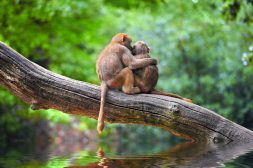The Water Cycle

The water cycle, also referred to as the hydrological cycle
Table of Contents
The water cycle (sometimes referred to as the hydrological cycle) is the continuous transfer of water from air, sea land and water in a continuous cycle. This continuous movement of water is sufficient to provide good living conditions on the planet while at the same time transferring the water to places where it is needed as a norm.
Entering the Cycle
Water in the oceans evaporates with long, direct exposure to the heat from the sun, and with the warm air above the warming ocean, the droplets of water rise as cold air rushes in to fill the gap of the rising warm air. This elevation of water is essentially cloud formation.The clouds are easily moved in the direction of the wind, and this driving mechanism pushes the cloud in any given direction, while more water evaporates from the ocean as well as transpiring from plants and animals. The clouds, which eventually rise to high altitudes and discharge their water as they hit the cooler air.
This rainfall can end up in a variety of places in the short term future, many of which in some way promote advantageous conditions for life to take advantage of it; water is an essential compound for countless species.
Groundwater
Water that is absorbed by the ground helps keep the ground reasonably soft and acts as a temporary store for the water in the cycle. It eventually finds its way back to the ocean via the water table, and by percolating through the rocks and underground material.
Lakes
Some water gets retained in hollows of the land; lakes. This still water will evaporate quite quickly on warm days with its large surface area, and can also form as a feed to a stream. Both of these types of water communities are investigated in the freshwater ecology tutorial.
Surface Run-Off
This water did not enter a stream of percolating the ground beneath it, and in very wet conditions a large amount of surface run-off water can accumulate from a hillside. This water will continue downhill until meeting sea level or a stream beforehand.
Consumption
Many species on and around the surface require water as an essential part of a balanced diet, for example; in forests, a respectable amount of water will be uptaken by the roots of trees and other vegetation from the groundwater and surface run-off. The previous two pages in the tutorial mention how in both animals (read: Animal Water Regulation) and plants (read: Plant Water Regulation) water homeostasis is maintained by various adaptations to suit the climate they exist in.
The next tutorial looks at the freshwater ecosystem, which plays an important part in this water cycle but is also an important habitat for many species in which they depend on (and have adapted to) for survival.
You will also like...

New Zealand’s Unique Fauna
Meet some of New Zealand's unique fauna, including endemic insects, frogs, reptiles, birds, and mammals, and investigate..

ATP & ADP – Biological Energy
ATP is the energy source that is typically used by an organism in its daily activities. The name is based on its structu..

Role of Golgi Apparatus & Endoplasmic Reticulum in Protein Synthesis
The endoplasmic reticulum and Golgi apparatus are the organelles involved in the translation step of protein synthesis a..

Pollution in Freshwater Ecosystems
There are many environmental factors that arise due to the usage of water in one way or another and for every action tha..

Early Mammals on Earth
The Earth's ecosphere was rapidly changing and throwing up a wide range of ecological niches that new adaptive organisms..

Population Regulation in an Ecosystem
With regard to the population size of a species and what factors may affect them, two factors have been defined. They ar..
